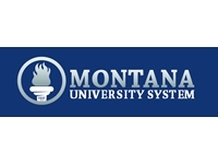|
Montana Rigorous Core is the college preparatory curriculum recommended to best prepare students to enter a 4-year university. Students who take more rigorous coursework in high school, maintain high GPAs, and score well on the ACT or SAT are most likely to be successful in college. Successful completion of the Montana Rigorous Core not only helps prepare students for entrance into college, but also opens up a myriad of scholarship opportunities including the MUS Scholarship.
|
Your browser does not support viewing this document. Click here to download the document.
Frequently Asked Questions
|
1. Can students use online courses or courses taught at a college to satisfy the Rigorous Core?
Yes, if they meet the requirements of Montana School Accreditation Standards 10.55.907 (Distance, Online, Technology Delivered Learning) and 10.57.437 (Teacher Licensure), which requires that college instructors obtain Class 8 Licensure. Montana School Accreditation Standard 10.55.906 allows school district trustees to determine if a student may be given credit for a course that meets the district’s curriculum and assessment requirements and is aligned with Montana’s content and performance standards. Courses could include online, dual credit, or college courses not offered in the high school. These courses must be recorded on the students’ high school transcripts. 2. Must dual credit courses be figured into the student’s GPA? Yes, if the course is used to fulfill the Rigorous Core requirements, the grade must be used in the GPA. 3. The rigorous core requires 4 years of math, one year “above Algebra II.” Is Statistics accepted as “above Algebra II”? Yes, statistics can be counted as one of the high school mathematics courses beyond Algebra II. 4. Can an 8th grade Algebra course count as one of the four years and can its grade be used to figure the high school GPA? To be included, it must be listed and credit must be given on the student's High School transcript. 5. The rigorous core requires 3 years of laboratory sciences: “earth science, biology, chemistry, physics and/or other lab sciences.” Does that mean one science from each category? The Montana University System campuses defer to the high schools and their list of courses meeting the lab science requirement, but generally accept any combination of three lab science courses as meeting the science portion of Rigorous Core. Therefore a student could qualify with Biology I, Biology II, and Chemistry, for example. However, the intent of this section is to encourage students to take a variety of science courses, one of which should be chemistry or physics. |
6. For the social studies requirement could a student who took a year of US History and a year of American Government fulfill the third credit by taking any of the following courses: World History, Themes in History, or any other social sciences course a high school might offer?
Yes, the universities accept any three years of the social sciences as Rigorous Core. 7. Can a student take three years of a second language to fulfill the elective requirement? Perhaps, but students must take two units of electives (vocational/technical and arts), in addition to second languages, in order to graduate from high school in Montana (Board of Public Education). Therefore, with three years of a second language, the student would have five units (years) of electives. 8. Can a student who graduates early qualify for the MUS Honors Scholarship? Yes, if that student has completed the Rigorous Core. As a result, he/she may have taken two units of English and two units of mathematics during one school year. Also, in order to qualify for the MUS Honors Scholarship, the student must have been enrolled in and in attendance at an accredited Montana high school for at least 3 years prior to graduation. 9. Can a student who has already taken the highest level of mathematics offered by the high school take college mathematics courses to count toward the Rigorous Core? Yes, if the high school does not offer courses that meet the needs of a very high-achieving student, that student can use early-college courses from a university or college to satisfy the four units of mathematics required by the Rigorous Core. The local school board may allow those credits to be included on the high school transcript (Montana School Accreditation Standard 10.55.906). If not, the student must submit both the high school and college transcript to verify eligibility for the MUS Honors Scholarship. 10. How is GPA figured when students take college-level courses that are not offered in their high schools? For the MUS Honors Scholarships, GPA is figured based on seven semesters and does not include the final semester of the senior year. College-level courses, such as Linear Calculus, that ARE NOT OFFERED BY THE HIGH SCHOOLS can be treated in the same manner as courses taken in that eighth semester and excluded from the high school GPA. |


